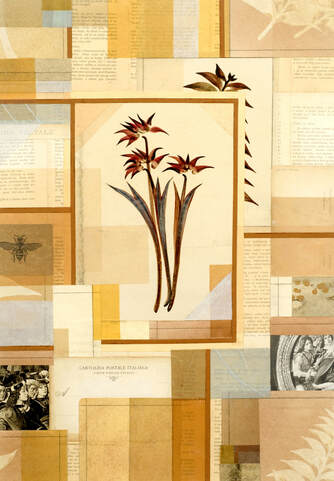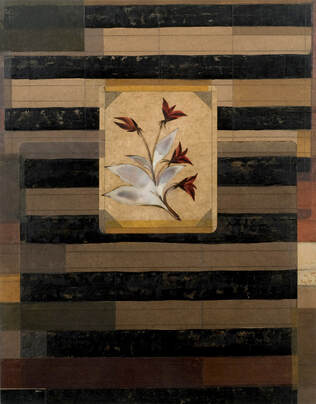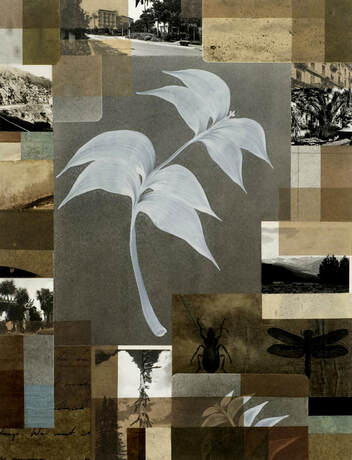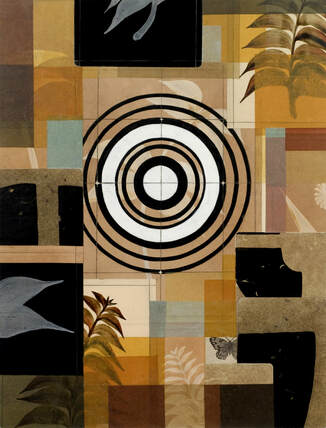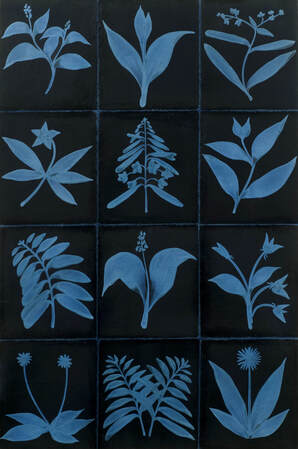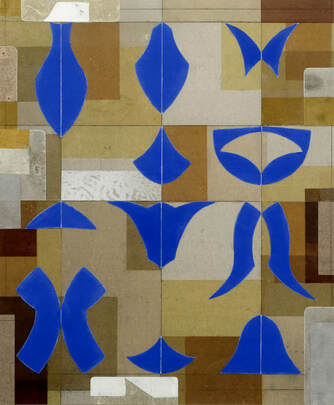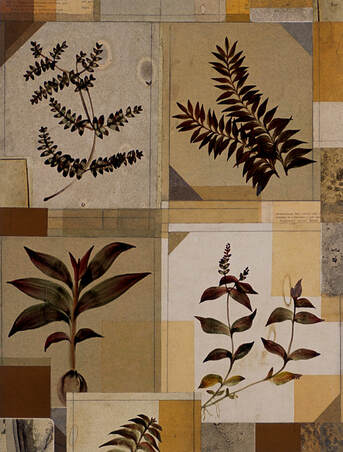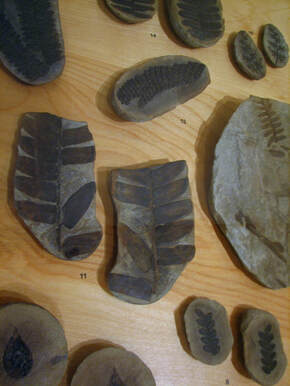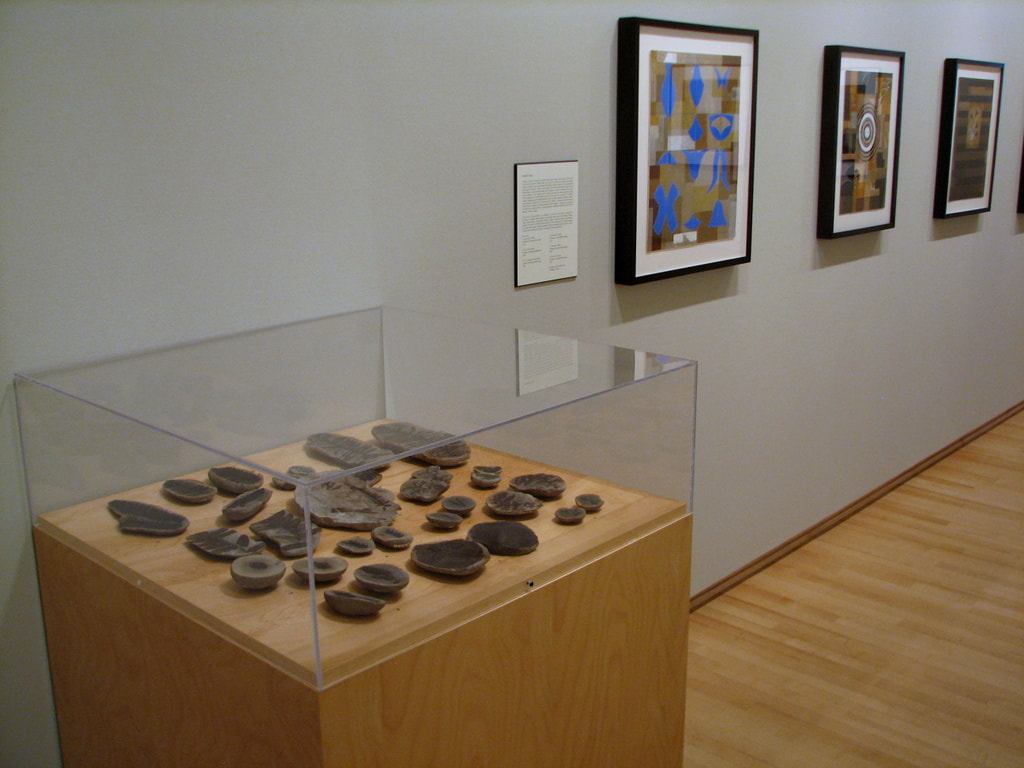Selected Catalog Essays
The Leaf and the Page
Illinois State Museum, Chicago 2008
- Douglas Stapleton, Curator
|
The Leaf and the Page
Art employs the natural world constantly as objects of enlightenment, study, veneration, and contemplation. This exhibition explores plants as conduits between humanity and the natural world, reflecting on the connection between the plant as object, a specimen for study and identification, and the plant as subject imbued with emotive and narrative qualities. The eleven artists in this exhibition ground their work in the basic visual vocabulary of plant structures: leaves, spines, stems, flowers, trunks, branches, and roots. Some of the artists employ traditional approaches to representation. print, drawing, painting, while others mirror botanical plasticity in a range of materials from paper to clay to stainless steel. Beyond this material variation of appearances, there is an association with the canon of historical botanical representation that becomes another of the many, nuanced convergences in the work. |
Relic series (c-339), 2007
Collage of hand-painted papers, with found photographs and text, on museum board, 22 x 14 in. |
|
Relic series (c-332), 2007
Collage of hand-painted papers on museum board, 19.5 x 15.5 in. |
What is this canon of botanical representation? It is best defined as art that depicts a plant subject in a way that is both scientifically accurate and aesthetically pleasing. It is also defined by its relationship to text, the description of the plant’s structure and appearance, habitat and use. Botanical Art in History The earliest interest in the vegetable kingdom was governed by practical considerations– the potential of plant life for food and medicine. Such works as Descorides’ De Materia Medica (40-90 AD) were compiled as guides for identifying plants with medical attributes. This medicinal emphasis continued through the medieval period of European history up through the Renaissance. The earliest works, from Greece and Rome up through the late fifteenth century, were laboriously hand-written, illustrated and copied, with additions, annotations and, of course, errors. With the advent of printing press and increased paper supplies, classic herbal text were printed and distributed to a wider audience. |
|
The 17th through the 19th centuries are often consider the heyday of natural history illustration as artists and naturalists depicted the influx of new specimens coming to Europe through exploration, trade and empirical expansion. This work was of ten meant to catalog and showcase the latest discovery or the prized garden flower with an increased virtuosity and attention to realism in their depiction. By the nineteenth-century, artists and critics frequently regarded art as the handmaiden of science, revealing both the factual and spiritual truths of nature. They believed that knowledge of the precise and measurable facts of the natural world, along with their accurate depiction, could shed light on the hidden divine impulses in nature. This particular development, an outcome of any confluent attitudes rising out of Humanism, Romanticism and Protestant philosophy, is a current that is evident in the work in this exhibition. This common denominator that links these artists to that past is the pleasure, the satisfaction felt by all who observe the natural world with a sustained and devoted intensity.
|
Relic series (c-338), 2007
Collage of hand-painted papers, with found photographs, on museum board. 19 x 14.5 in. |
|
Relic series (c-337), 2007
Collage of hand-painted papers on museum board. 18.75 x 14.25 in. |
Contemporary Issues in Botanical Art
Science still uses pictures as a vital part of communicating information as is evidenced by Olivia Petrides contribution of illustrated books plates in this exhibition. While art and scientific illustration share the same techniques of representation, it is the rules of what is permissible in composition that distinguish botanical illustration from the more mediated representations of artists and poets. Petrides. Illustrations exemplify these rules: isolated figures of plants with no background and multiple views of a specimen highlighting key elements of plant structures. Also, in the printed book version, the images are accompanied by the all important text. But how accurate are these images? The translation of live specimens onto the page requires a certain conceptual leap where negotiations of the truth are acceptable. The living, moving, changing form is now flat, static, and frozen. Stages of growth and development are often simultaneously presented and the use of schemata, cross-sections, enlargement and reductions are often necessary to fit the formal constraints of the page. |
|
The artists in this exhibition negotiate around these same representational strategies of simultaneity, reduction, enlargement, and schema, linking their work back to the botanical canon. Equally, each of these artists pulls from their own observation and experience of nature, offering their direct contemplation of the green world. Most importantly, these artist draw upon the vast, metaphoric realm where human nature and Nature converge– and sometimes collide– in a rich linguistic, emotive and imagistic engagement.
|
Relic series (c-344), 2007
Collage of hand-painted papers on museum board. 22.25 x 14.75 in. |
|
Relic series (c-345), 2007
Collage of hand-painted papers on museum board. 20.25 x 17 in. |
|
|
This artist, this naturalist, is a collector of the past. He is also a biologist by training. In Andrew Young’s home, his paintings coexist with collections of fossils, shells, and minerals. In particular, Young is drawn to fossilized plants, like those on exhibit in the case near his work, which provide him with sources for his image making. But unlike these muted, ancient materials, Young’s collages exhale a pungent, earthy vitality and a restless yearning for connection to place and being.
The Langford Collection of Mazon Creek Fossils at the Illinois State Museum The Illinois State Museum has curated over 200,000 specimens in its geology/paleontology collections, including 60 type and figured invertebrates, 6 fish types and over 600 type and figured plant fossils. The museum represents an especially strong collection of Carboniferous fossils from the scientifically and nationally significant Mazon Creek and Rock Island areas of Illinois. |
Leaves and Lanterns series (c-314), 2005
Collage of hand-painted papers on museum board. 19.5 x 15.25 in. |
|
Carboniferous Period plant fossils from the
George Langford collection, State of Illinois Museum, Springfield, IL |
On exhibit are examples of fossilized plants that inhabited this part of North America around 300 million years ago. These plants– ferns, seed ferns, horsetails, club mosses, and early conifers– were living in the swampy lowlands along the shores and rivers that border a large inland sea that covered much of the region. When the plants died they were washed into the bays and were preserved through the process of fossilization. These fossils, collected from the Mazon Creek area of northeastern Illinois, are particularly important to the study of paleobiology in that soft-body organisms, along with plants, were preserved as well as the more widespread occurrence of fossilized bone, shell or teeth of animals. In addition to being a record of the biological diversity of ancient North America, these fossils are extraordinary documents of sculptural composition and breath-taking beauty.
|
|
Andrew Young has been a member of the Earth Science Club of Northern Illinois since 2008, has written articles for the club’s website and is presently an editor and writer (as well as photographer and illustrator) for a new text on the fossil fauna of Mazon Creek. Many specimens from his personal collection will be featured in the book, and another important find of his is now part of Chicago’s Field Museum of Natural History. Young is also a volunteer in the Paleontology Department of the Chicago Academy of Sciences.
|
Exhibition View of The Leaf and The Page, including Mazon Creek
fossil specimens from the Illinois State Museum collection |
